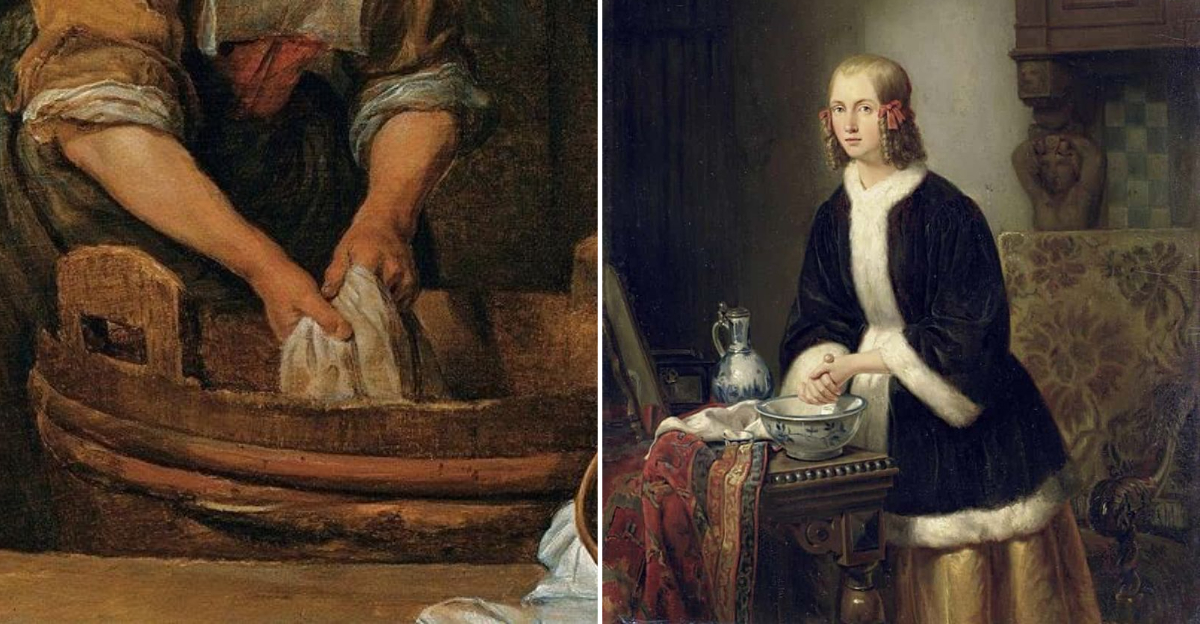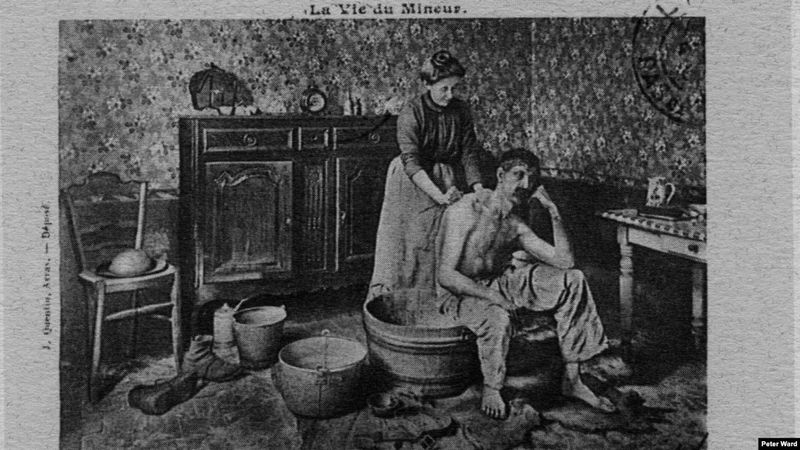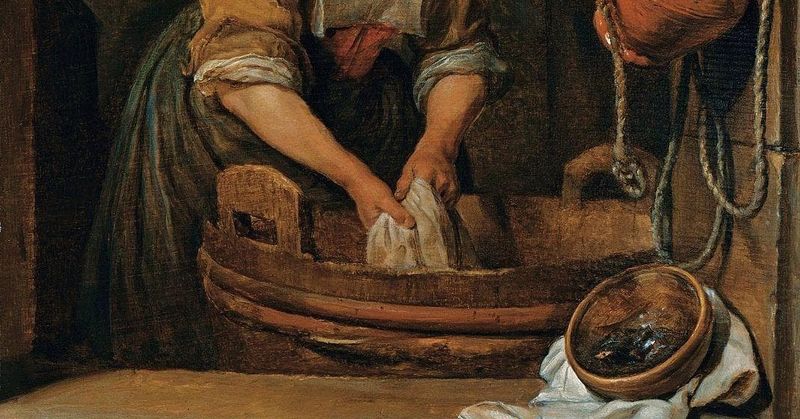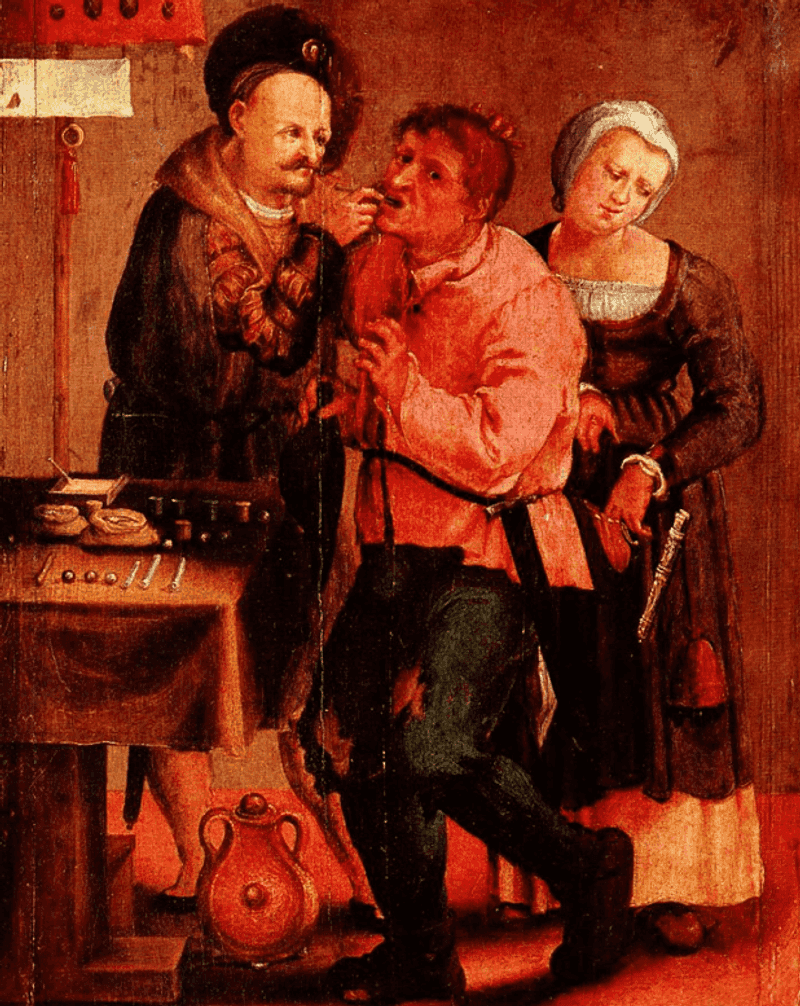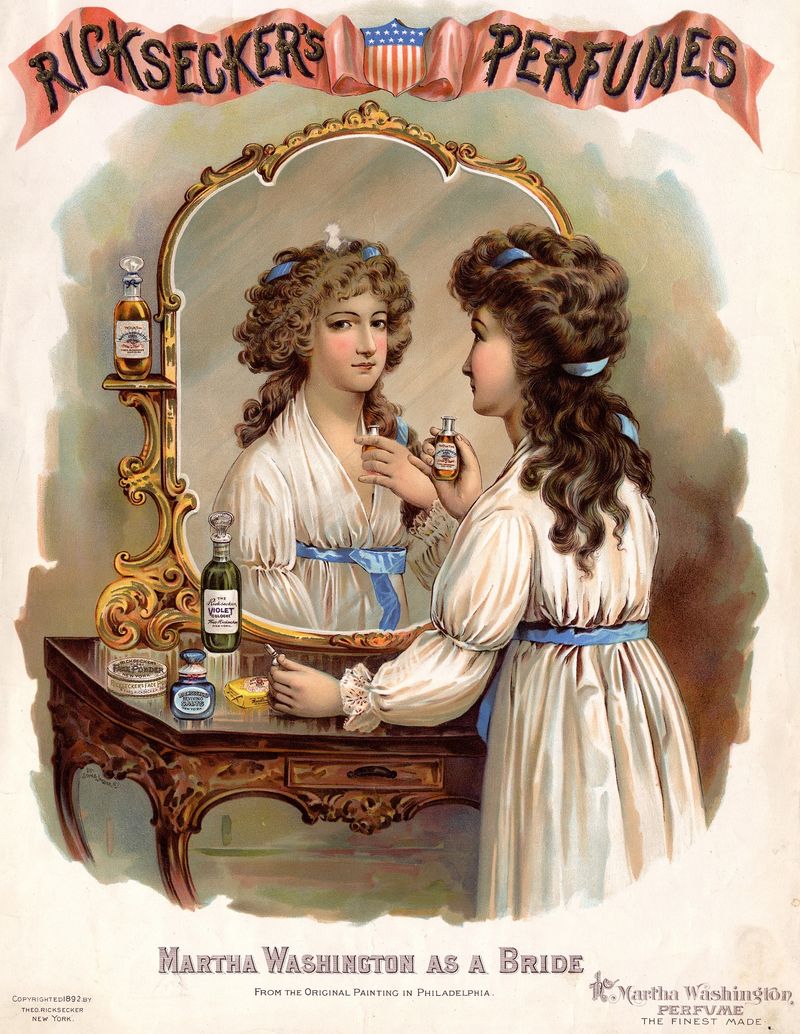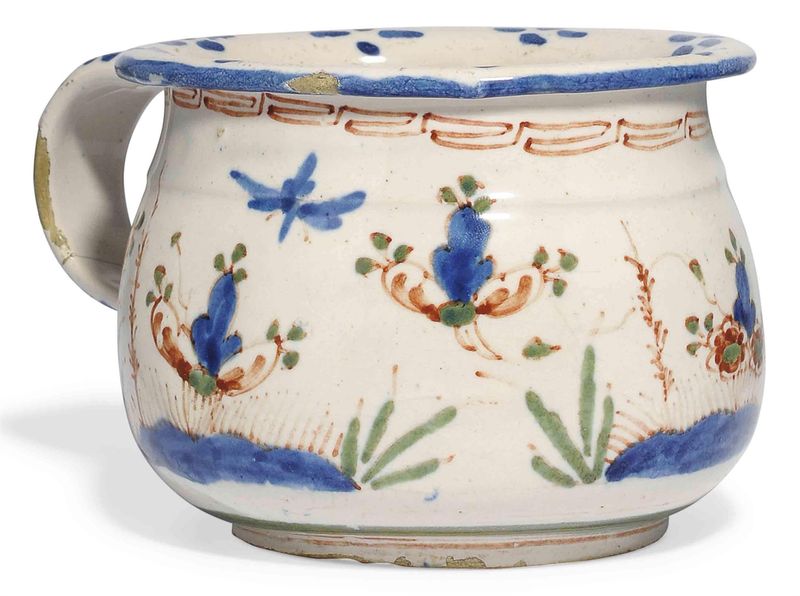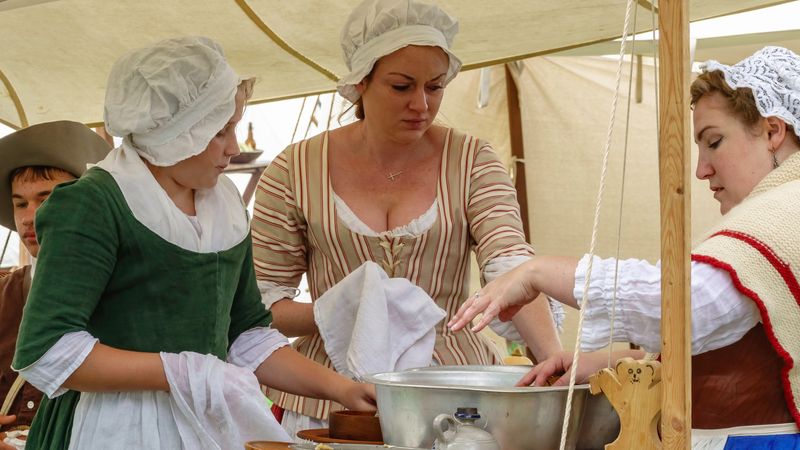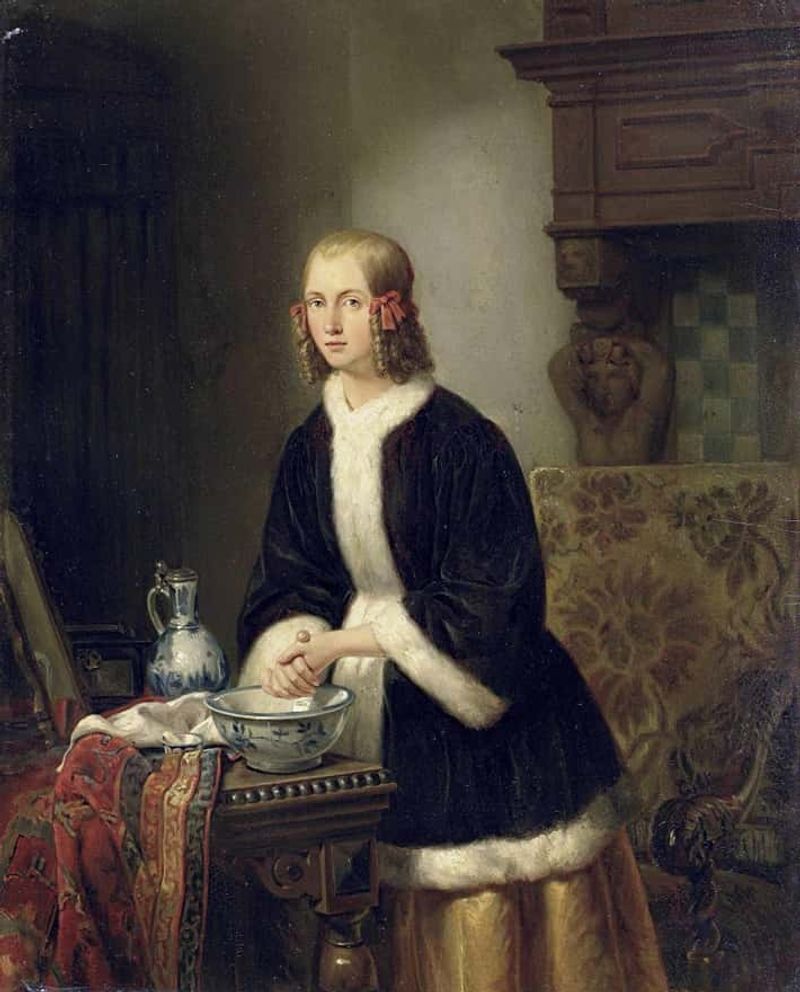Colonial America wasn’t just a time of powdered wigs and revolutionary ideals—it was also an era of questionable hygiene practices that would make modern sensibilities cringe. From infrequent bathing to dubious dental care, here are 17 shocking hygiene habits from colonial times that highlight just how far we’ve come in cleanliness.
1. Bathing Was a Rare Luxury
In colonial America, full-body baths were infrequent due to the labor-intensive process of heating and transporting water. Many believed that bathing too often could strip the body of essential oils, making one susceptible to illness. This led to a culture where washing was done sparingly, with caution about losing natural oils.
The belief in the dangers of frequent bathing was widespread; people thought it could weaken the body’s defenses. As a result, those of higher social standing might bathe a few times a year, turning a simple bath into an event of luxury.
In cities, bathhouses existed but were often viewed with suspicion, as hygiene was not equated with health as it is today. Bathing was a rarity, a luxury few could afford in terms of time and effort.
2. Shared Bathwater Among Family Members
When families did indulge in the rare luxury of bathing, it was common practice to share the same tub of water. Typically, the head of the household, usually the father, would bathe first, followed by the mother, with children having their turn last.
This practice was born out of necessity, as heating and transporting water was laborious. As a result, the water quality diminished with each successive bather, making the experience less about cleanliness and more about the ritual of a bath.
The communal nature of bathing reflected societal norms of resourcefulness and frugality. Despite the unsanitary conditions, this method was widely accepted as the norm at the time.
3. Minimal Use of Soap
Soap was not a staple for personal hygiene in colonial America. Many colonists relied on water alone, or used cloths to wipe themselves clean, reserving soap primarily for laundry. The absence of regular soap use contributed to the less-than-ideal hygiene standards of the time.
Soap-making itself was an arduous task, often involving animal fat and lye, making it a resource not freely available for daily use. Consequently, cleanliness was a relative term, and the use of soap for personal hygiene was limited to special occasions.
The lack of soap usage reflected the practicalities of colonial life, where priorities were often centered on survival and efficiency rather than modern cleanliness standards.
4. Belief That Dirt Protected Against Disease
A peculiar belief in colonial times was that a layer of dirt on the skin could protect against disease. This notion led many to avoid washing regularly, thinking that dirt served as a barrier from illness.
The idea was rooted in the misunderstanding of disease transmission and the human body’s defenses. It was thought that removing dirt could expose the body to harmful pathogens, reinforcing an aversion to frequent baths.
This practice was not just a matter of convenience but a reflection of the era’s medical knowledge, or the lack thereof, shaping daily hygiene routines.
5. Public Streets as Garbage Dumps
Without organized waste disposal systems, colonists often used public streets as makeshift garbage dumps. Household refuse, including human waste, was commonly thrown into the streets, leading to unsanitary and odorous conditions.
This practice attracted vermin and facilitated the spread of diseases, as the waste was left to decompose right where people lived and worked. The lack of sanitation systems was a glaring issue that modern public health initiatives have since sought to rectify.
The streets of colonial towns were often unpleasant places, with the absence of organized sanitation contributing to a hazardous living environment.
6. Tooth Cleaning with Twigs and Cloth
Dental hygiene in colonial times was rudimentary; people commonly used frayed twigs or cloths to clean their teeth. Toothbrushes and toothpaste were rare commodities, and dental care was often minimal at best.
This practice offered little protection against cavities or gum disease, leading to widespread dental issues. Despite the simplicity of these methods, they were the primary means of maintaining oral hygiene.
In an era without modern dental care, these meager tools represented the best effort colonists could muster in caring for their teeth.
7. Use of Animal Hair for Toothbrushes
When toothbrushes became available, they were often crafted with animal hair bristles. While innovative for the time, these toothbrushes had their own set of problems, as the bristles could harbor bacteria and decay.
The use of animal hair was largely due to the lack of synthetic materials, but it wasn’t ideal for maintaining oral hygiene. Many colonists continued to suffer from dental problems despite these primitive tools.
These toothbrushes were not replaced frequently, reflecting the challenges of sustaining even basic dental cleanliness in a time of limited resources.
8. Limited Access to Clean Water
Access to clean water was a significant challenge in colonial America, especially in burgeoning urban areas. Contaminated water sources were common, contributing to the spread of diseases like dysentery and typhoid.
The struggle for water purity was a daily reality, as settlers relied on rivers and wells that were often contaminated by waste and runoff. Clean water was a precious commodity, influencing both health and hygiene practices.
The lack of clean water made efforts to maintain personal hygiene even more difficult, underscoring the harsh living conditions of the period.
9. Infants Bathed to ‘Harden’ Them
It was a common belief among some colonists that bathing infants in cold water would ‘harden’ them, supposedly making them more resilient to illness.
This practice was less about cleanliness and more about building toughness, reflecting the era’s harsh survivalist mindset. Parents engaged in this ritual with the hope of fortifying their children’s health.
The idea of ‘hardening’ was intertwined with broader cultural attitudes about child-rearing and the perceived benefits of exposing children to the elements.
10. Use of Perfumes to Mask Odors
Instead of regular bathing, many colonists opted to use perfumes and scented powders to mask body odors. This practice was borrowed from European traditions, where scents played a significant role in personal grooming.
Perfumes helped colonists navigate social settings without drawing attention to the natural odors resulting from infrequent bathing. This led to a culture where fragrance became a substitute for cleanliness.
The reliance on perfumes illustrated the era’s attitudes towards hygiene, where masking odors was more feasible than consistent cleanliness.
11. Communal Use of Chamber Pots
Chamber pots were a common fixture in colonial homes, used for nighttime waste collection. These were often emptied into the streets or nearby water sources, further contributing to unsanitary conditions.
The communal use of chamber pots reflected the practical needs of the time, as plumbing did not exist and privacy was limited. This disposal method posed significant health risks, exacerbating the spread of disease.
The reliance on chamber pots underscored the challenges of maintaining sanitation in a world without modern conveniences.
12. Lice and Flea Infestations Were Common
Due to infrequent bathing and laundering, lice and flea infestations were widespread in colonial America. Shaving heads and wearing wigs became a common strategy to combat these persistent pests.
The prevalence of lice and fleas was not just a matter of personal discomfort, but a significant public health issue, as infestations spread easily among closely knit communities.
Wigs, often powdered and scented, served not only as fashion statements but also as practical solutions to the rampant lice problem.
13. Limited Use of Toilet Paper Alternatives
Toilet paper was nonexistent in colonial times; instead, colonists used materials like corncobs, leaves, or cloth for personal cleaning after defecation. These materials were often readily available and served a basic purpose.
The lack of modern conveniences necessitated creative solutions for personal hygiene, reflecting the resourcefulness required in everyday colonial life.
These alternatives, while practical, highlight the stark contrast between colonial and contemporary hygiene practices.
14. Bathhouses Were Social, Not Hygienic, Spaces
While bathhouses did exist, they were primarily social venues rather than places dedicated to personal hygiene. Bathhouses were associated with relaxation and socializing, rather than regular cleanliness.
This perception stemmed from the cultural norms of the time, where bathing was infrequent and often viewed with suspicion. Bathhouses served more as gathering places than as facilities for regular bathing.
The social aspect of bathhouses underscored the era’s approach to hygiene, where community interaction often trumped personal cleanliness.
15. Religious Beliefs Discouraged Bathing
Certain religious groups in colonial America believed that frequent bathing was either vain or sinful, leading adherents to avoid regular washing.
This belief was rooted in the notion that focus on physical cleanliness could detract from spiritual purity. As a result, personal hygiene practices were often influenced by religious convictions.
The intertwining of religion and hygiene reflected broader social values, where spiritual concerns often took precedence over physical cleanliness.
16. Use of Lead-Based Cosmetics
To achieve a pale complexion, some colonists applied lead-based cosmetics, unaware of their toxic effects. This practice was common among those who desired to emulate the European fashion trends of the time.
Unfortunately, the use of lead in cosmetics led to severe health issues, including skin damage and poisoning. Despite these dangers, the pursuit of beauty often outweighed health concerns.
The use of hazardous cosmetics highlighted the lengths to which people would go to adhere to societal standards, even at the risk of their health.
17. Neglect of Handwashing
Handwashing was not a common practice in colonial America, even before meals or after using the restroom. This neglect contributed to the spread of illnesses, as germs were easily transmitted through direct contact.
The absence of handwashing in daily routines reflected the limited understanding of hygiene and disease transmission at the time. Illnesses spread quickly in close-knit communities, exacerbating health issues.
Modern hygiene practices have identified handwashing as a crucial preventive measure, a stark contrast to the oversight observed in colonial times.
